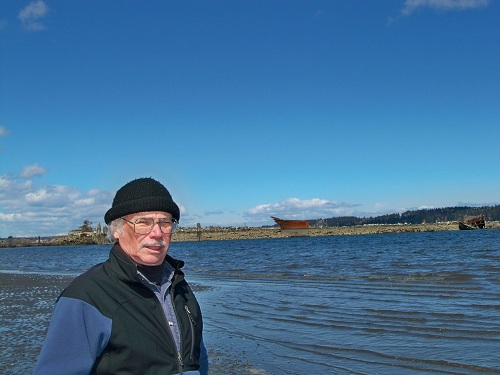Ever since the release of my book, Raincoast Chronicles 21: West Coast Wrecks & Other Maritime Tales, in October, I’ve been very eager to pick up a copy of the Vancouver Sun every Saturday morning. Why? This is when the B.C. Bestseller list, compiled by the Association of Book Publishers of B.C., is featured in the paper’s Weekend Review.
I must say, it’s been heady times seeing the outcome of my efforts up there on that list for over four months now; especially after pounding away at the keyboard in the basement in isolation for so many years. Still, my making the ‘list” didn’t happen all on its own.

I can’t say enough about Harbour Publishing who have done an absolutely fabulous job of promoting the book. Howard White’s staff went the extra mile ensuring that book review editors in all the big papers on the coast, as well as various radio show hosts all had their review copies and invitations to interview me.
But I also went the extra mile on my own since since I wasn’t content to just sit back and leave it entirely in Harbour’s hands. And I realized that they, like all publishers, only have so much money available to send an author gallivanting around the landscape to book store readings or PowerPoint presentations.
So I volunteered to head over to Tofino and up to the North Island, where I was convinced there was an excellent market, on my own dime. I was right, and much to Harbour’s credit, they contributed to expenses after all.
And what about social media you ask? That must have been a major factor in the book’s success. Right? Well, as much as some friends and colleagues are totally convinced this is the way to go, I avoided it. No blogs, Facebook, or even a webpage! While it might seem I’m a total throwback to a different day and age, I have never been fully convinced that this route was ever worth pursuing. (God forbid, I waste enough time trying to keep with emails!)
I must admit though, I did rely on some social interaction. But it was the old school kind. Since I was up and down Vancouver Island a lot this winter, I made it a point to stop at each and every bookstore I was going by. Whether it was Chapters in Nanaimo or Ivy’s, the small independent on Oak Bay Avenue in Victoria, I walked in, introduced myself and volunteered to autograph any copies of my book they had on hand.
I did this, not once but twice and even three or four times over the past four months. And has it paid off? You bet! Here it is mid-January and I’m still sitting at #6 on the BC Bestseller list!

![MC900439004[1]](http://paulawild.ca/wp-content/uploads/2011/12/MC90043900412.jpg)